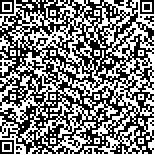| 摘要: |
| 患者流程数据能真实反映患者在医疗
流程中的转移路径及效率,从而帮助设计者从
患者的角度厘清医疗流程各环节在医疗空间上
的状态与关系,为医疗建筑的设计提供真实可靠
的前期资料。本文以重庆市西南医院老年医学科
门诊为研究对象,运用流程挖掘法提取了患者
高频诊疗流程,并分析概括出相关空间节点间
的关联度。然后在此基础上,通过对患者转移
路径的分析与比较,从科室定位与功能配置的
角度提出了3种流线优化模式。最后为解决老年
多病患者诊疗流线问题,提出“老年医学诊疗中
心”概念,并结合调研数据对其内部的功能配置
与布局进行了初步探索。 |
| 关键词: 患者流线 流程挖掘 适老化 老年医
学科 诊疗中心 |
| DOI:10.13791/j.cnki.hsfwest.20240613 |
| 分类号: |
| 基金项目:国家自然科学基金面上项目(52078072) |
|
| Research on aging-friendly of elderly patient flow in general hospitals based on process mining |
|
WANG Qi,DU Miao
|
| Abstract: |
| In recent years, with the intensification of aging and the improvement of public health
awareness, the demand for medical care for the elderly has increased dramatically, and the aging
of medical buildings has become a key problem, especially the complex diagnosis and treatment
process of large general hospitals very unfriendly towards older patients and the various problems
with finding the way have meant that overall diagnostic and treatment efficiency is low. Patient
flow data can truly reflect the transmission path of patients in the medical process, help designers
clarify the state and relationship between the different parts of the medical process from the
patient’s perspective in the medical space and time, and provide real information and reliable prior
information for the Planning of hospital buildings. Therefore, this article aims to take the geriatric
department of The Southwest Hospital of Amu in Chongqing as the research object and the actual
diagnosis and treatment process of patients as the starting point to study the aging problem of the
influx of elderly patients in large general hospitals.
Using field research, it firstly gathered actual data on the diagnosis and treatment processes
of elderly patients. It then processed the data using the process mining program DISCO,
eliminating low-frequency activities and pathways to create a high-frequency model of the
patients’ diagnosis and treatments, and summarizing and analyzing the close relationships between
the pertinent process nodes. Next, it recorded the number of spatial transfers of elderly patients and
the transit distance under the current layout, which is subsequently used as a comparison standard,
and it simulated the real patient transfer path by combining it with Southwest Hospital’s
planar spatial relationship. It then investigated the optimization of the three department positioning
and function configuration modes compared with the original mode, based on the high-frequency
diagnosis and treatment process, the close relationship between the relevant spatial nodes, and the
number of spatial transfers and transit distance as a comparison measure.
The results are as follows: (1) The geriatric department is mainly divided into two groups
of high-frequency processes: Firstly, the main processes for patients who do not need to undergo
medical examination are “Registration (manual window)/Registration (electronic)-Primary waiting-
Secondary waiting-Treatment-Manual window payment-Getting drug”; secondly, the main process
for patients who need to undergo medical examinations is as follows: “Registration (electronic) /
Registration (manual)-Primary waiting-Secondary waiting-Treatment-Manual Window Payment/
Electronic Payment-Laboratory department-Electrocardiogram-Ultrasound- Radiology (in no
particular order)-Receiving Report-Manual Window Registration-Primary Waiting-Secondary
Waiting-Treatment-Manual window payment/Electronic Payment-Getting drug. (2) The frequency
of medical technology is “Laboratory Department-Electrocardiogram- Radiology-Ultrasound” in
descending order. (3) 5 flow optimization modes: Functional configuration (clinic+waiting room)
+ Department positioning (near the registration and payment area and the electrocardiogram area);
Functional configuration (clinic+ waiting room+ exclusive registration and payment) + Department
positioning (close to the laboratory); Functional configuration (clinic + waiting room + exclusive
registration and payment + electrocardiogram) + Department positioning (near the laboratory);
Functional configuration (clinic + waiting room + exclusive registration and payment + ultrasound)
+ Department positioning (near the laboratory); Functional configuration (clinic + waiting room +
exclusive registration and payment + electrocardiogram + ultrasound) + Department positioning(near the laboratory). (4) Functional configuration and design of the Geriatrics Treatment Center. Based on the special outpatient clinic of the geriatrics
department, four affiliated clinics for cardiology, endocrinology, respiratory medicine and ophthalmology were established to ensure coordinated treatment
with the geriatrics department. In addition, registration and payment, exclusive medical technology, a comprehensive examination room and a common MDT
consultation area were added to provide more comprehensive and convenient medical services to geriatric patients with multiple diseases.
Using the Southwest Hospital of Amu as an example, this article demonstrates the process mining method’s enormous potential for improving patient
flow in the geriatric population. In order to give geriatrics accurate and trustworthy information about department positioning and functional configuration
design, process mining analysis of the patient flow in the specialty can assist designers in highlighting high-frequency diagnosis and treatment processes
from the actual diagnosis and treatment activities of patients. It can also help to clarify the transmission relationship and frequency characteristics between
geriatrics and other related departments additional functional spaces. |
| Key words: patient flow process mining aging-friendly geriatrics treatment center |


